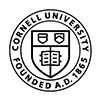Elbow – Osteochondritis Dissecans Surgery
Content below from Orthobullets.com
- A localized injury and subsequent separation of articular cartilage and subchondral bone of the capitellum
Epidemiology
- Demographics
- Usually occurs after age 10 (typically adolescents)
- Juvenile OCD better prognosis than adult
- Boys more common than girls
- Location
- Typically located in capitellum of dominant upper extremity
- Risk Factors
- Repetitive overhead and upper extremity weight bearing activities
- Gymnasts and throwing
Pathophysiology
- Theorized to result from repetitive compression-type injury (overhead or upper extremity weight bearing activities) of the immature capitellum causing
- Vascular insufficiency
- Repetitive microtrauma
Associated conditions
- Panner's disease (osteochondrosis of the capitellum)
- Typically presents in first decade of life (<10 years old)
- Usually benign self-limiting course
- Same mechanism of injury as OCD
- Surgery is contraindicated for Panner disease (unlike OCD elbow)
Prognosis
- Prognosis based on physeal status
- Most heal between 6 to 18 months of nonoperative treatment
- Wide range of potential disability
- Inability to participate in sports at same level
- Up to 50% develop arthritic changes long term
Classification System
- Type I - Intact cartilage
Bony stability may or may not be present - Type II - Cartilage fracture with bony collapse or displacement
- Type III - Loose bodies present in joint
Symptoms
- Elbow pain
- Insidious, activity-related onset of lateral elbow pain in dominant arm
- Mechanical symptoms
- Loss of extension
- Early sign
- Catching / locking / grinding
- Late signs if loose bodies present
- Loss of extension
Physical exam
- Lateral elbow tenderness
- Mild loss of extension
- Possible effusion of elbow joint
- Usually mild
- May or may not present with crepitus
Imaging:
Radiographs
- Recommended views
- AP and lateral of the elbow
- Findings
- Plain radiographs can confirm the diagnosis based on bone defect
- Capitellum is most commonly involved
- Panner disease exhibits an irregular epiphysis, OCD a well-defined subchondral lesion
MRI
- Most useful for assessing:
- Size
- Extent of edema
- Cartilage status
Treatment:
Nonoperative
- Cessation of activity +/- immobilization
- Indications
- Type I lesions (stable fragments)
- Technique
- 3-6 weeks followed by slow progression back to activities over next 6-12 weeks
- Outcomes
- >90% success rate
- Indications
Operative
- Arthroscopic microfracture or drilling of capitellum
- Indications (separated fragments)
- Unstable type I lesions
- Stable type II lesions
- Technique
- Microfracture of chondral lesion
- Extra- or transarticular drilling of defects
- Post op care
- Pprotected early range of motion
- Strengthening at 2 months
- Throwing and weight bearing at 4-6 months
- Outcomes
- Good success rate
- Indications (separated fragments)
- Fixation of lesion
- Indications
- Large lesions that are incompletely displaced
- Technique
- Arthroscopic reduction and fixation
- Post op care
- Protected early range of motion
- Strengthening at 2 months
- Throwing and weight bearing at 4-6 months
- Outcomes
- Highly variable
- Indications
- Arthroscopic debridement and loose body excision
- Indications
- Unstable type II lesion
- Type III lesions
- Post op care
- Early range of motion +/- brace
- Begin strengthening when range of motion is pain free
- No throwing or weight bearing activities X 3 months
- Indications
- Osteochondral autograft or allograft transplantation surgery (OATS)
- Indications
- Large type II and III capitellar lesions which engage the radial head
- Uncontained lesions may require size-matched fresh allograft
- Post op care
- Early range of motion
- Resistive/strengthening exercises at 3 months
- Progressive throwing program begins at 5 months through 7 months
- Indications
for more information visit Orthobullets.com

















